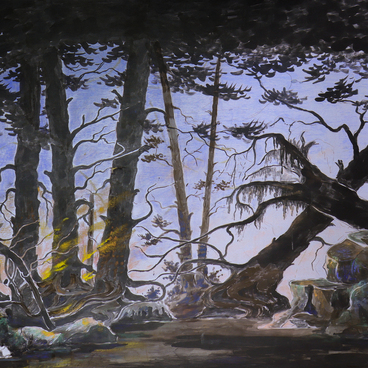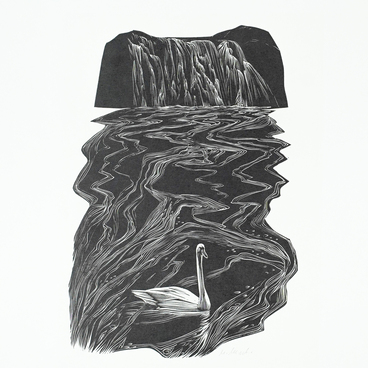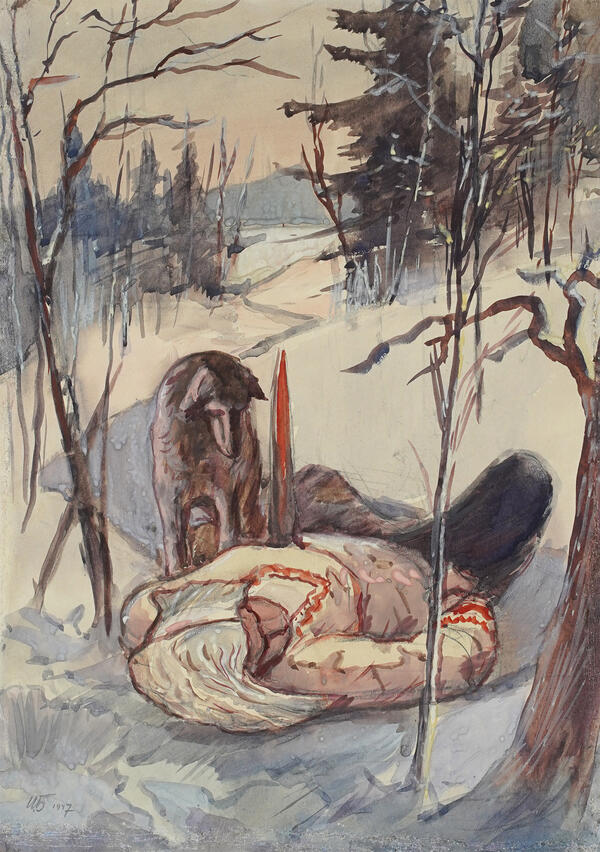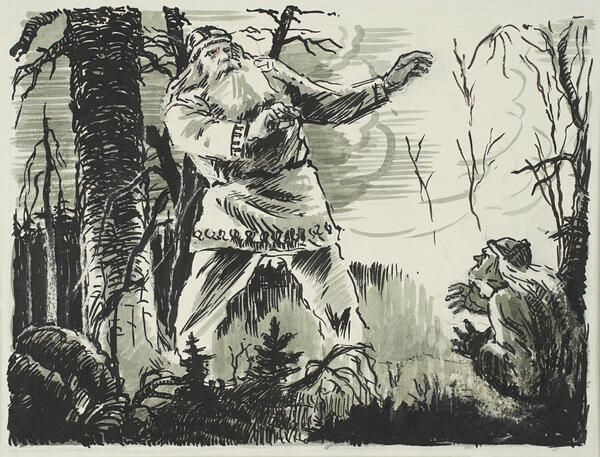Osmo Pavlovich Borodkin was a Soviet painter and graphic artist. He was born into a peasant Karelian family in 1913. He attended a seven-year school in the village of Kestenga. Having graduated from the Petrozavodsk Pedagogical Institute in 1932, he worked as a teacher at the Kestenga school. Between 1936 and 1937, he was employed as an artist at the Karelian Scientific Research Institute, participating in ethnographic and folklore expeditions. In 1937, he entered the Leningrad Art and Pedagogical Institute, but did not have time to graduate: he was drafted into the army in 1940.
During the Great Patriotic War, Osmo Borodkin served in partisan units and participated in campaigns behind enemy lines. In 1945, he was gravely wounded in Poland. He was demobilized in May of 1946.
After the war, he began working on illustrations for the “Kalevala”. The works of Osmo Pavlovich Borodkin are held in the collections of the National Museum and Museum of Fine Arts of the Republic of Karelia.
The artist passed away in 1949 and was buried in Petrozavodsk, at the Peski Cemetery.
The character of old Louhi forces the heroes of the “Kalevala” to act: because of her, they perform feats and make the Sampo mill. She has the power to enchant people or transform herself, for instance, into a bird. The image of Louhi — the hostess of Pohyola (Pohjola) — is a significant driving force in the narrative. She is always portrayed as a formidable, malevolent old woman with an intimidating, piercing gaze. Yet, her facial features still retain traces of her former beauty, suggesting that she may have been attractive in her youth.
Generally, when artists depict a female figure as frightening, it is likely a reflection of her inner nature. Louhi is responsible for sending diseases to the land of Kalevala and stealing the Sun and Moon. In folktales, the ruler of the northern land of Pohyola is not named, and Elias Lönnrot borrowed this name from ancient incantations.
Louhi is portrayed in the poem as both an
intelligent, welcoming and caring hostess concerned for her daughters’
well-being, as well as the matriarch of the family interested in its prosperity
and ready to defend her land. However, by the end of the story, she has lost
her human form and is driven by jealousy and vengeance, leading her to engage
in conflict with the heroes of Kalevala.




